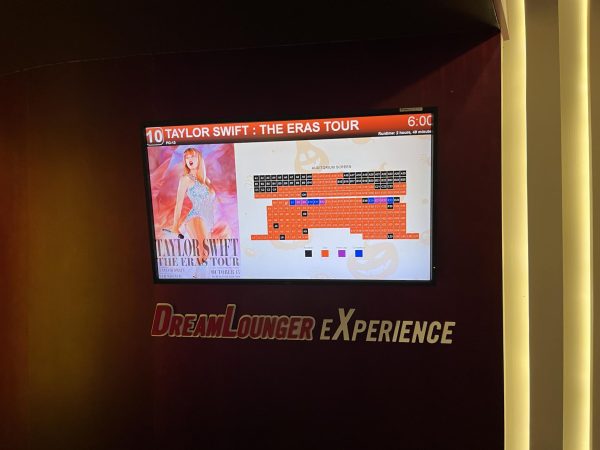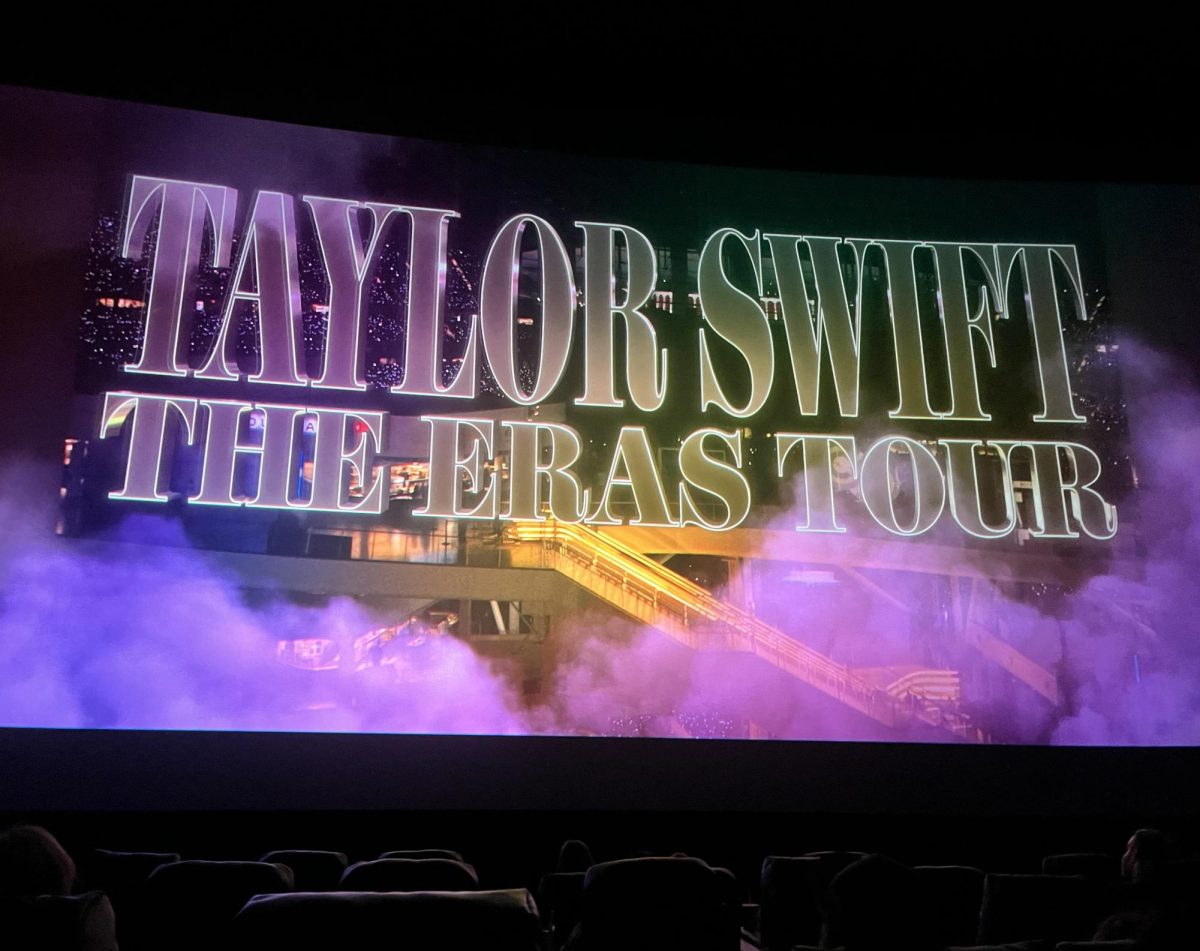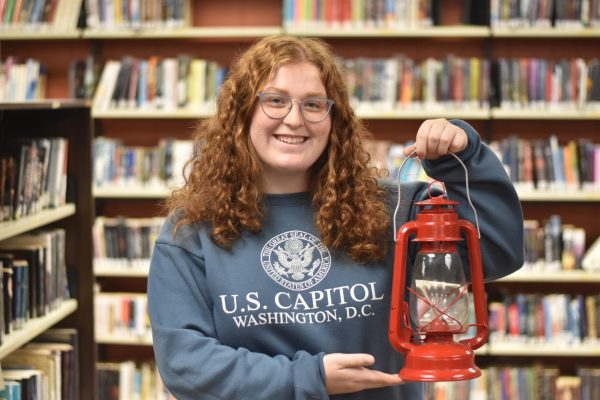First selling out stadiums, and now movie theaters, music mogul Taylor Swift seized the box office as her newest escapade into the economy and cultural influence this past week. Her film, Taylor Swift: The Eras Tour, debuted worldwide in theaters on October 13, 2023. The film offered a unique close-up and intimate look into her performance of The Eras Tour at Sofi Stadium.
Swift’s The Eras Tour goes far beyond musical influence, however. By the end of her U.S. leg of the tour, Swift’s fans – or Swifties – are estimated to have brought a $5.7 billion boost to the U.S. economy between tickets, merchandise, travel, and more, according to the Washington Post. The $5.7 billion dollar economic boost is just from the concerts. Per the New York Times, the addition of the Taylor Swift: The Eras Tour film added another $95 to $97 million in the first three days of its showing alone.
Taylor Swift: The Eras Tour redefines the art of the concert film, as once again, Swift turned against cultural expectations of a typical concert experience via her creative touch at the tour and her vision for her movie in theaters.

At the concert film, Swifties and non-Swifties alike can notice a change in movie-theater etiquette. In her Instagram post announcing the concert, she mentioned, “Eras attire, friendship bracelets, singing, and dancing [are] encouraged,” which served as the first indication Taylor Swift: The Eras Tour would be unlike other concert films. And, Swift was right. In theaters across the world, Swifties treated the concert film more like a concert than a film by singing, dancing, cheering, and chanting along with Swift, mirroring the behavior of a stadium full of fans. Swift was not the only one to spur the change in cultural etiquette; movie theaters stimulated it too. At Marcus Theaters, there was a preview to Taylor Swift: The Eras Tour of CEO Greg Marcus adorned in Swiftie clothing encouraging fans to sing, dance, take selfies, and treat it like a concert experience.
Many Swifties also decided to dress up for the tour, as Swift prodded, often in tour merchandise or their own take on the glittery outfits Swift wore at the concert. Another aspect of Swifties’ outfits was the inclusion of friendship bracelets. Inspired by the lyric “So make the friendship bracelets, take the moment and taste it,” from Swift’s song, “You’re On Your Own, Kid,” friendship bracelets became a phenomenon at The Eras Tour to trade and display beaded creative messages. The bracelet trading didn’t stop at the last show on the U.S. leg; friendship bracelets were common staples of movie-goers’ outfits, and for the worldwide release, many theaters offered friendship-bracelet-making stations, including Marcus Theaters.

The cultural frenzy surrounding Taylor Swift: The Eras Tour consisting of encouragements to treat the movie as a concert altered the atmosphere of the movie. But the film itself was radiant in its own realm. Swift, over the course of her career, navigated several genres from country, to pop, to alternative, and back to pop again. Each “era” of the concert required her to change her bejeweled outfits, elaborate sets, and persistent energy to match the aura of its respective time. That task is difficult, but the ease at which Swift executed it is truly phenomenal.
Close-up shots of Swift throughout the eras accentuated details that most concert-goers and even avid SwiftTok watchers could miss. For example, during the Red era, she wore her “Red” ring made for her by jeweler Cathy Waterman, which was also featured on the Red (Taylor’s Version) album cover. During her performance of “The Man” each of her dancers can be seen performing various office tasks on a tiered set. And of course, her microphones, guitars, pianos, and stage screen visuals have various designs and colors for different eras. The attention Swift pays to the tiniest details in her outfits set this concert – and now concert film – apart from others. It’s not just a show; it’s a performance.
Swift’s The Eras Tour included her quarantine albums folklore and evermore, both of which juxtapose her upbeat pop past and offer a dreamy, story-driven shift in tone to the concert. “I think she wanted to prove the folklore and evermore albums could be stadium-concert worthy,” junior Josie Collins observed, “The public didn’t think it could happen. Concerts don’t have to be pop and rock, they can be folk music as well.” The success of folklore and evermore, even in a stadium setting, offer versatility to the set, but also require Swift herself to adapt to the major mood change. For this part of the film, Swift prances around in flowy dresses and cloaks, climbs onto cabins and tables, and even plays the song “champagne problems” entirely on the piano.
However, starkly contrasting the tranquil sets of folklore and evermore were the upbeat eras of her pop albums. During these times in the concert, the choreography was far more intensive, showcasing Swift’s ability to sing flawlessly while simultaneously pulling cardio dance moves. “She’s an athlete to perform how she does,” movie-goer Michael Miller said. Over the course of Taylor Swift: The Eras Tour’s two-hour and 48-minute run time, Swift flips every societal expectation of what a concert film can be, and it is offered to the general public at a far more accessible rate than concert tickets.
Taylor Swift: The Eras Tour is a musical journey from the highest highs to the lowest lows and left theater audiences captivated for almost three hours. According to WTMJ-TV Milwaukee, The Eras Tour’s movie may invoke theaters and movie entities to alter current business models. The long-term impact of Taylor Swift: The Eras Tour has yet to be realized, but it may serve as a catalyst for similar concert and theater industry revolutions in the near future.



